Abstract
BACKGROUND: This paper reports findings from a field experiment that evaluated mass media campaigns designed to prevent cigarette smoking by adolescents. METHODS: The campaigns featured radio and television messages on expected consequences of smoking and a component to stimulate personal encouragement of peers not to smoke. Six Standard Metropolitan Statistical Areas in the Southeast United States received campaigns and four served as controls. Adolescents and mothers provided pretest and posttest data in their homes. RESULTS AND CONCLUSIONS: The radio campaign had a modest influence on the expected consequences of smoking and friend approval of smoking, the more expensive campaigns involving television were not more effective than those with radio alone, the peer-involvement component was not effective, and any potential smoking effects could not be detected.
Full text
PDF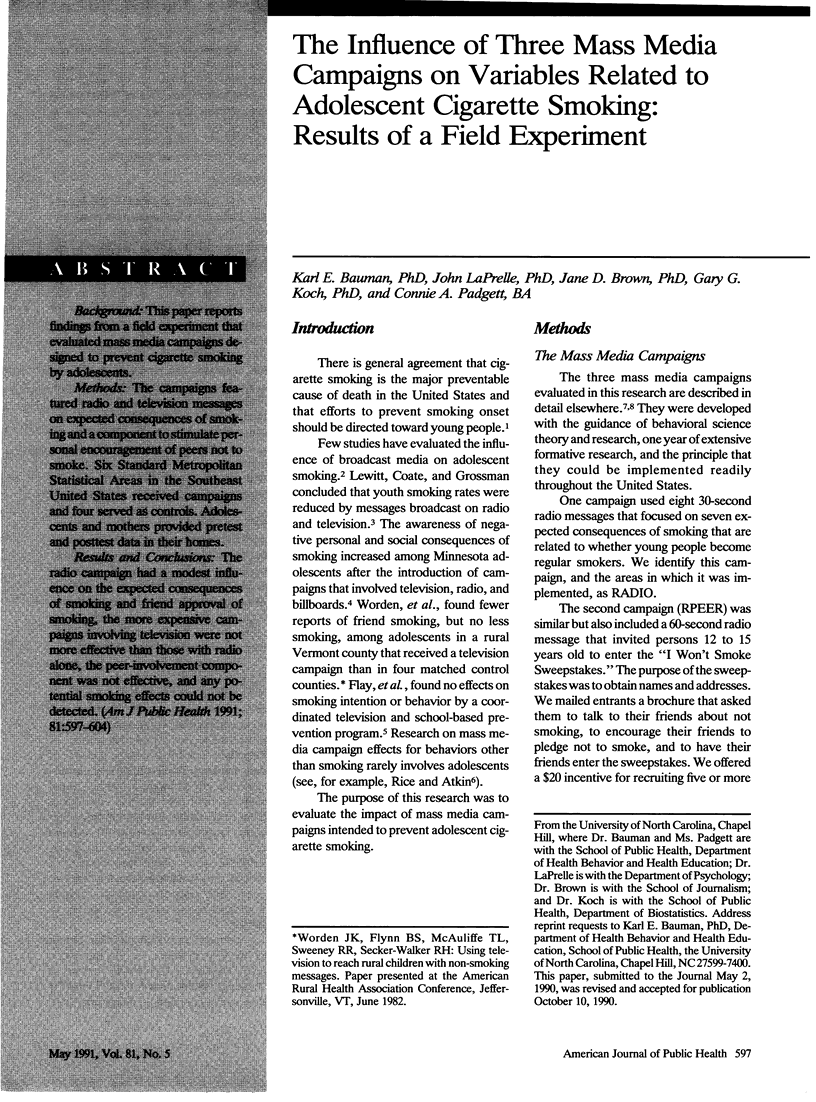
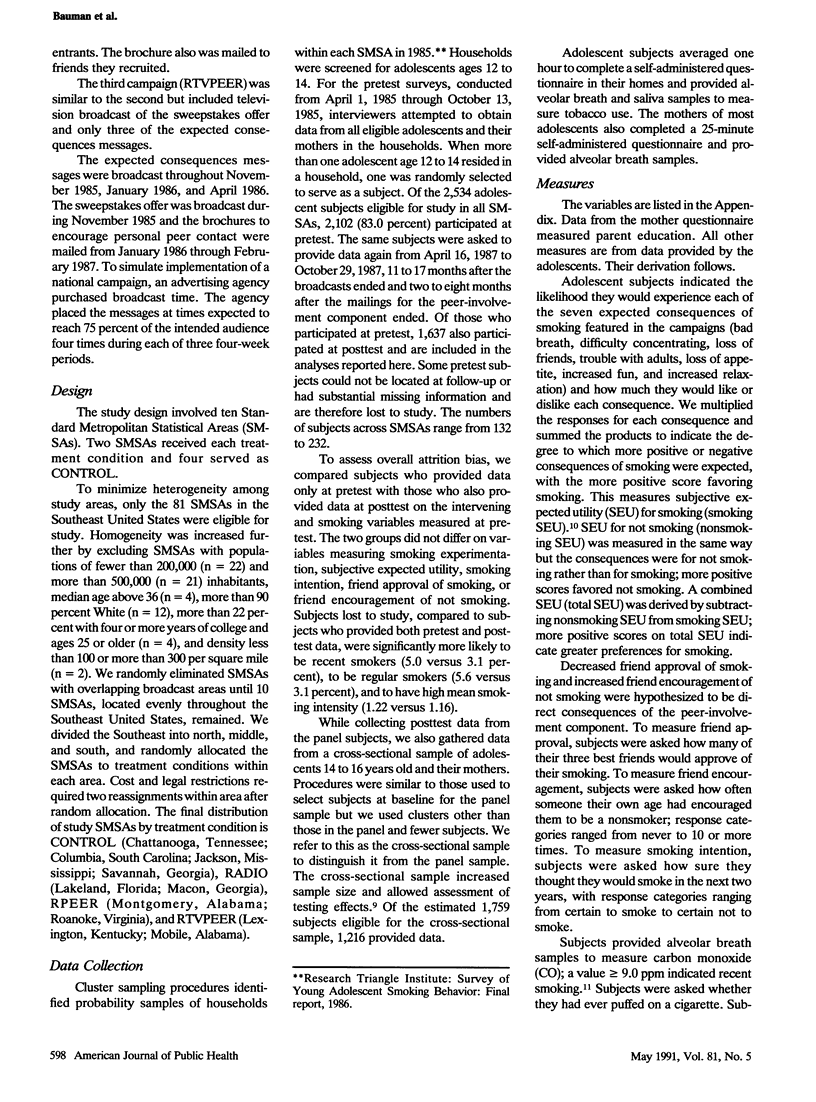
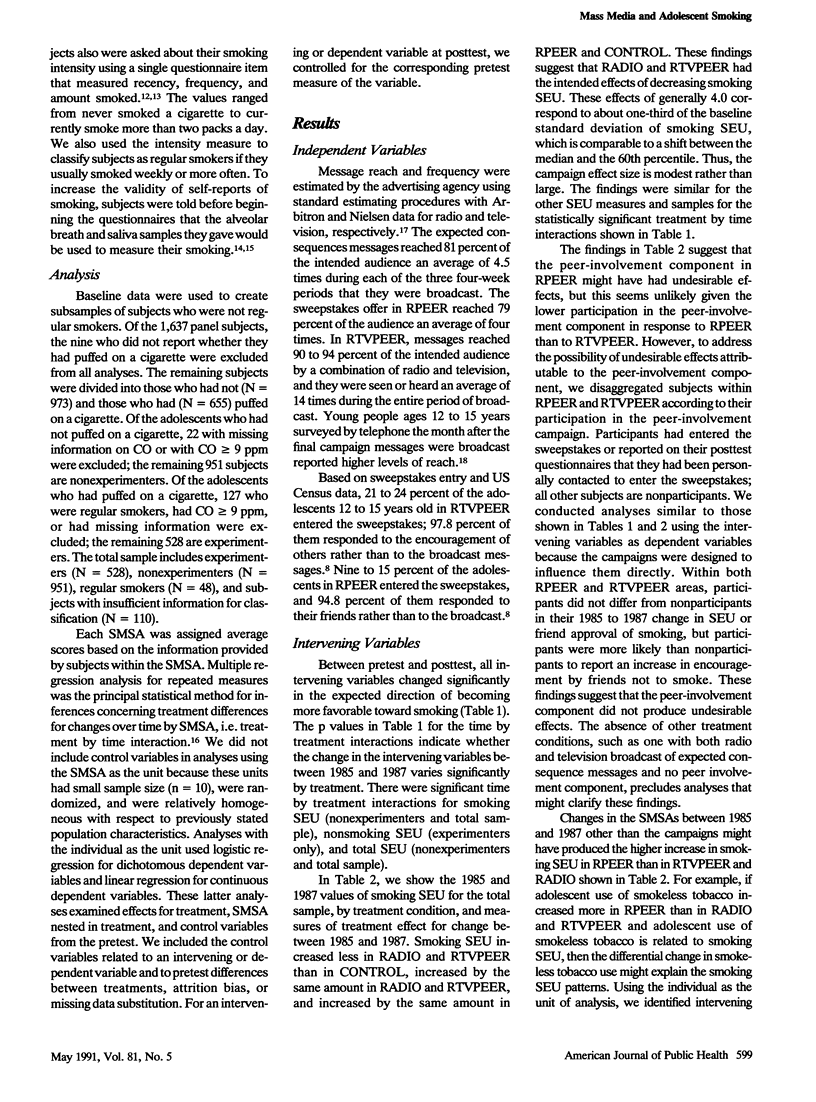
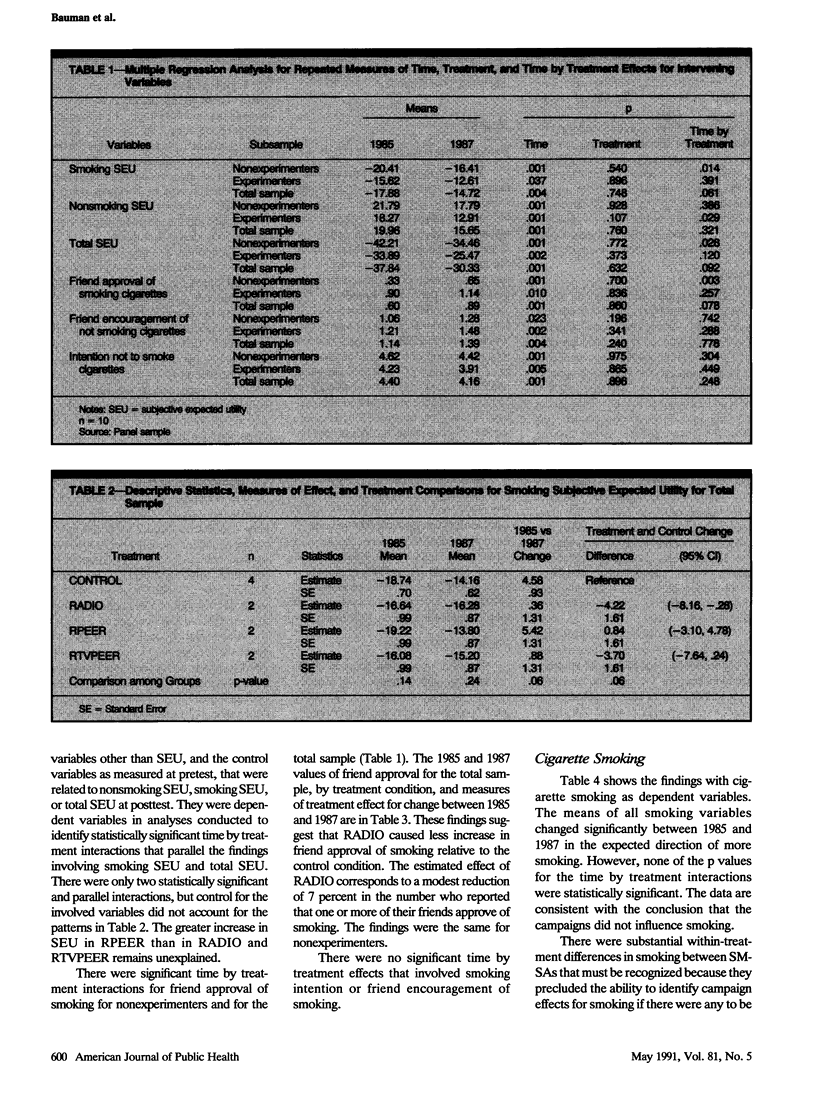
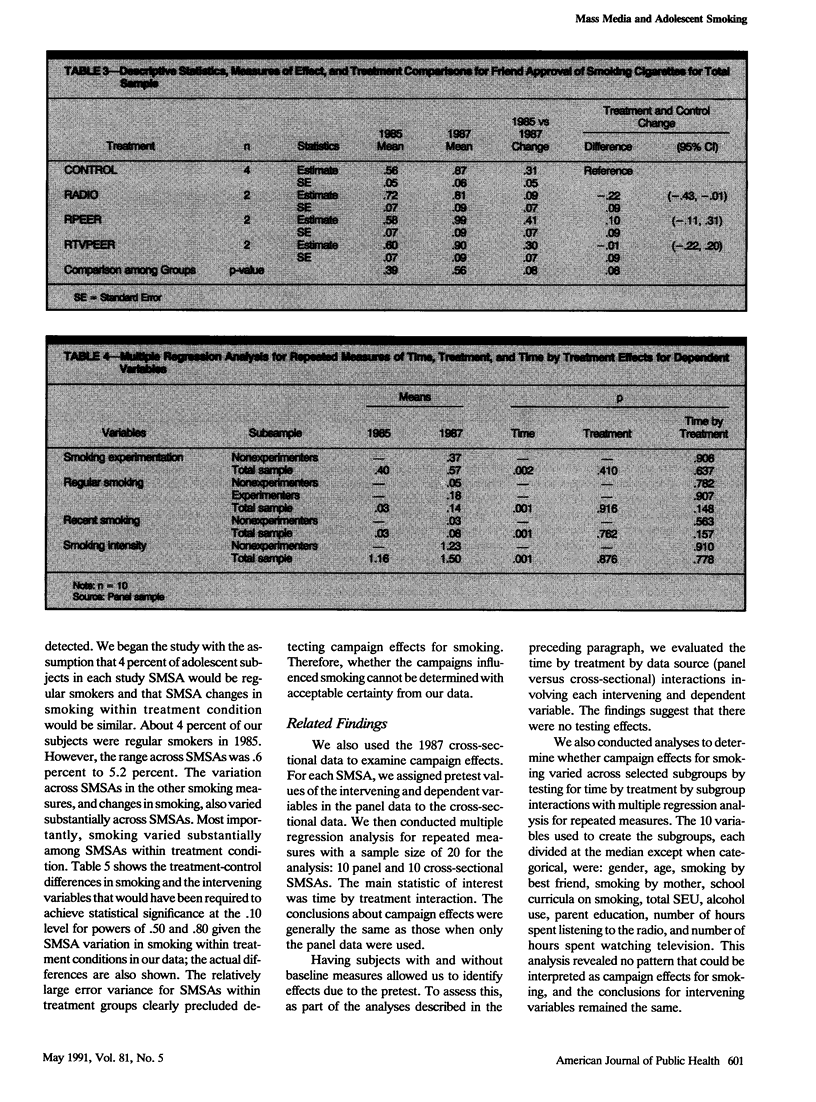
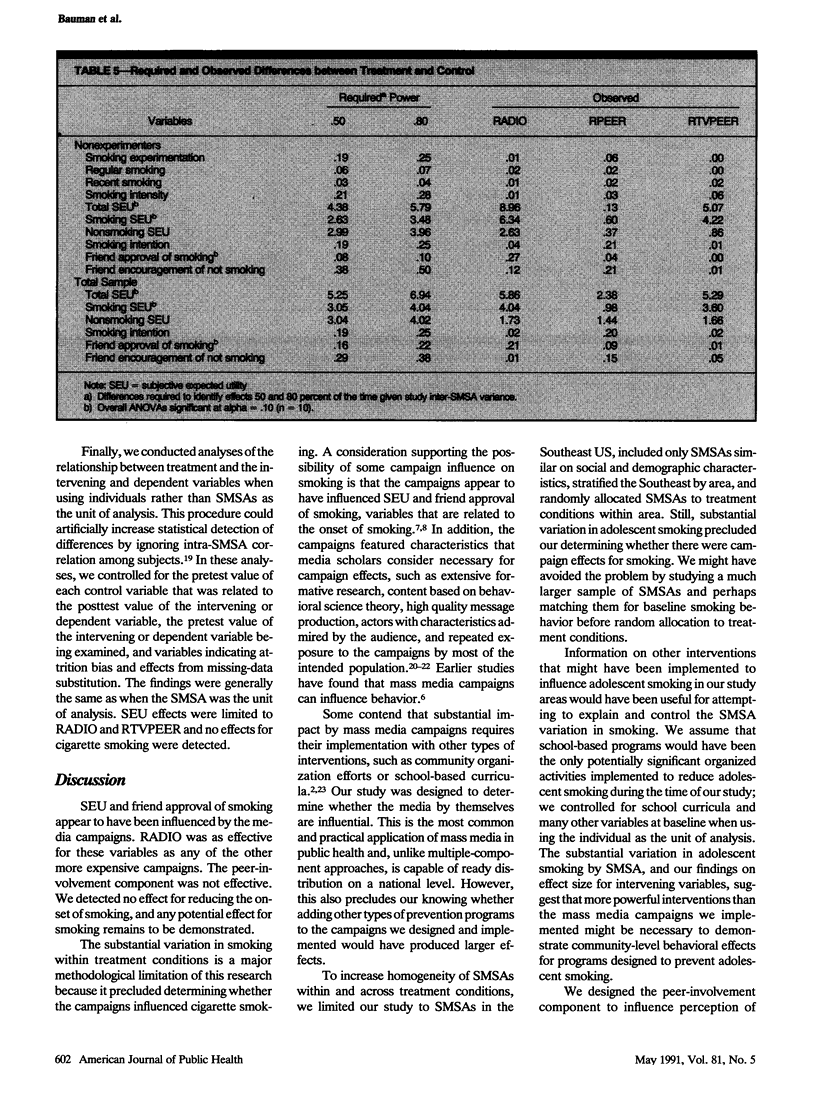
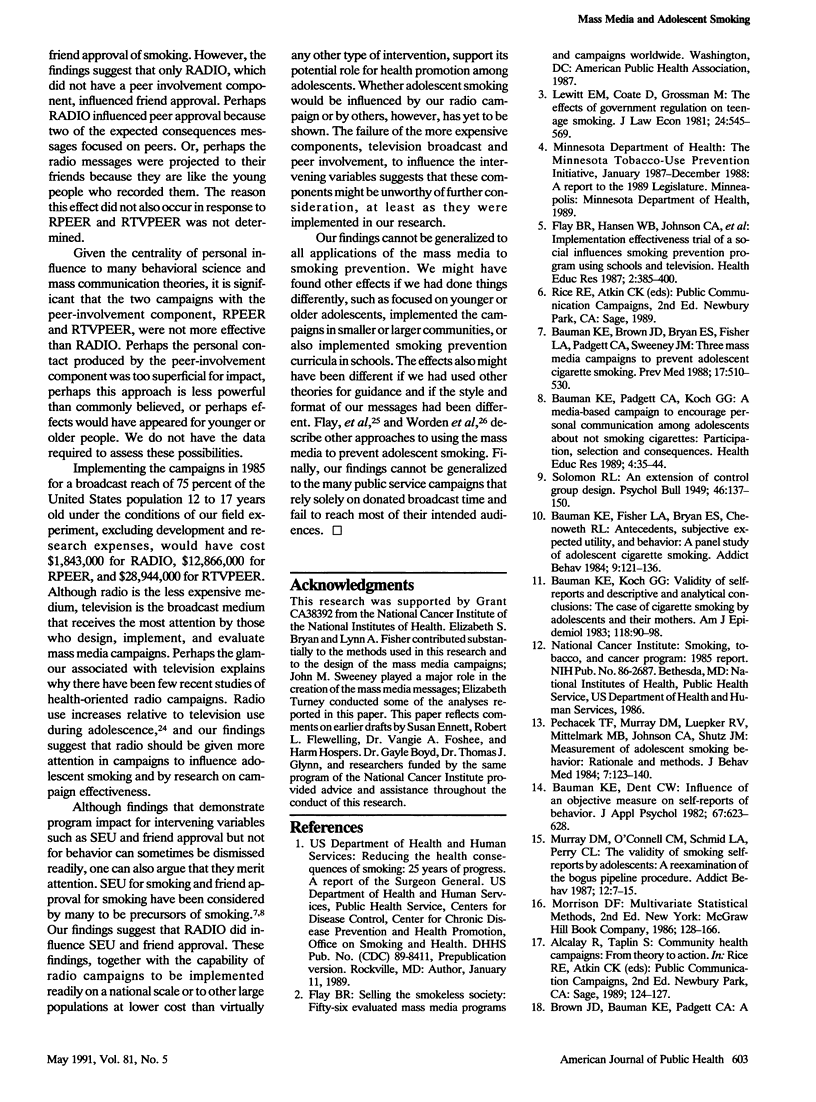
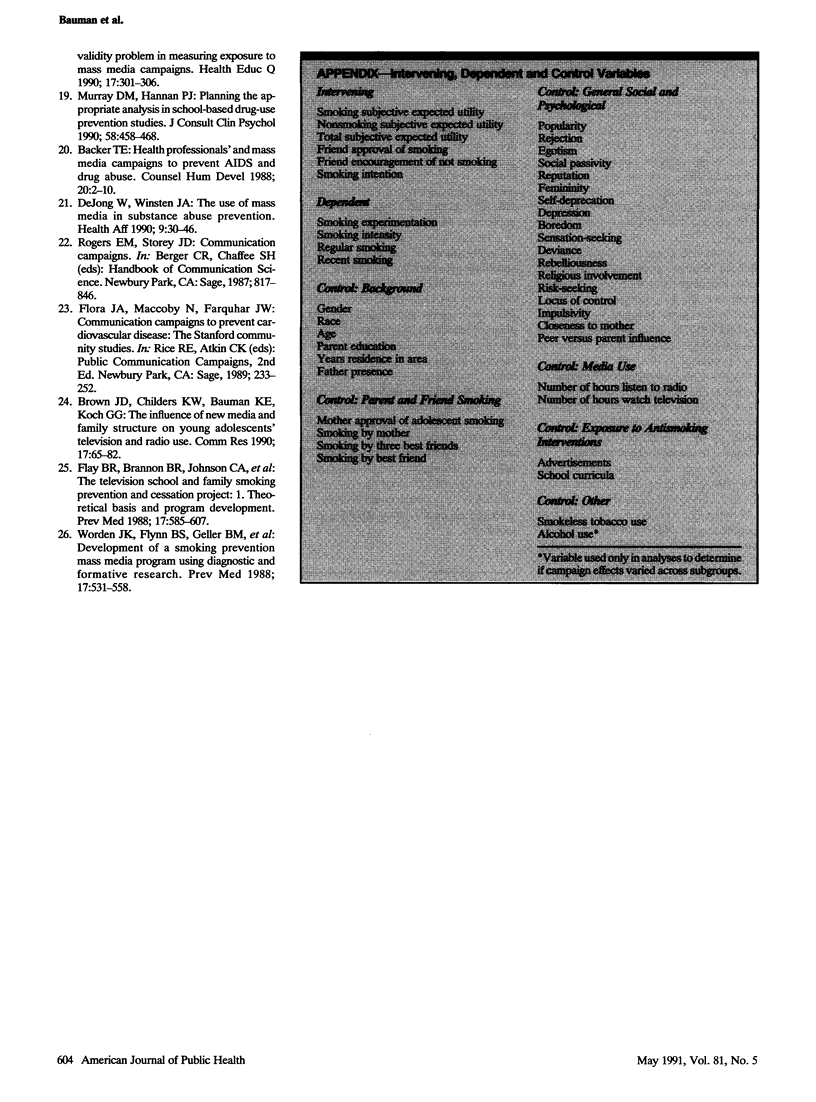
Selected References
These references are in PubMed. This may not be the complete list of references from this article.
- Bauman K. E., Brown J. D., Bryan E. S., Fisher L. A., Padgett C. A., Sweeney J. M. Three mass media campaigns to prevent adolescent cigarette smoking. Prev Med. 1988 Sep;17(5):510–530. doi: 10.1016/0091-7435(88)90050-3. [DOI] [PubMed] [Google Scholar]
- Bauman K. E., Dent C. W. Influence of an objective measure on self-reports of behavior. J Appl Psychol. 1982 Oct;67(5):623–628. [PubMed] [Google Scholar]
- Bauman K. E., Fisher L. A., Bryan E. S., Chenoweth R. L. Antecedents, subjective expected utility, and behavior: a panel study of adolescent cigarette smoking. Addict Behav. 1984;9(2):121–136. doi: 10.1016/0306-4603(84)90050-9. [DOI] [PubMed] [Google Scholar]
- Bauman K. E., Koch G. G. Validity of self-reports and descriptive and analytical conclusions: the case of cigarette smoking by adolescents and their mothers. Am J Epidemiol. 1983 Jul;118(1):90–98. doi: 10.1093/oxfordjournals.aje.a113620. [DOI] [PubMed] [Google Scholar]
- DeJong W., Winsten J. A. The use of mass media in substance abuse prevention. Health Aff (Millwood) 1990 Summer;9(2):30–46. doi: 10.1377/hlthaff.9.2.30. [DOI] [PubMed] [Google Scholar]
- Flay B. R., Brannon B. R., Johnson C. A., Hansen W. B., Ulene A. L., Whitney-Saltiel D. A., Gleason L. R., Sussman S., Gavin M. D., Glowacz K. M. The television school and family smoking prevention and cessation project. 1. Theoretical basis and program development. Prev Med. 1988 Sep;17(5):585–607. doi: 10.1016/0091-7435(88)90053-9. [DOI] [PubMed] [Google Scholar]
- Murray D. M., Hannan P. J. Planning for the appropriate analysis in school-based drug-use prevention studies. J Consult Clin Psychol. 1990 Aug;58(4):458–468. doi: 10.1037//0022-006x.58.4.458. [DOI] [PubMed] [Google Scholar]
- Murray D. M., O'Connell C. M., Schmid L. A., Perry C. L. The validity of smoking self-reports by adolescents: a reexamination of the bogus pipeline procedure. Addict Behav. 1987;12(1):7–15. doi: 10.1016/0306-4603(87)90003-7. [DOI] [PubMed] [Google Scholar]
- Pechacek T. F., Murray D. M., Luepker R. V., Mittelmark M. B., Johnson C. A., Shutz J. M. Measurement of adolescent smoking behavior: rationale and methods. J Behav Med. 1984 Mar;7(1):123–140. doi: 10.1007/BF00845351. [DOI] [PubMed] [Google Scholar]
- Worden J. K., Flynn B. S., Geller B. M., Chen M., Shelton L. G., Secker-Walker R. H., Solomon D. S., Solomon L. J., Couchey S., Costanza M. C. Development of a smoking prevention mass media program using diagnostic and formative research. Prev Med. 1988 Sep;17(5):531–558. doi: 10.1016/0091-7435(88)90051-5. [DOI] [PubMed] [Google Scholar]


